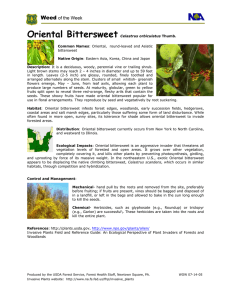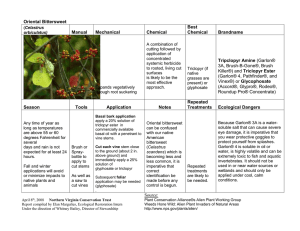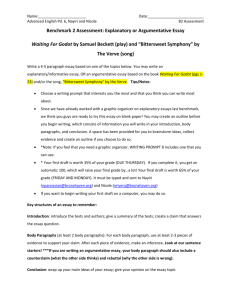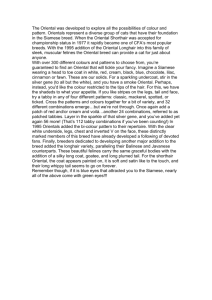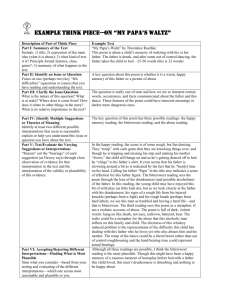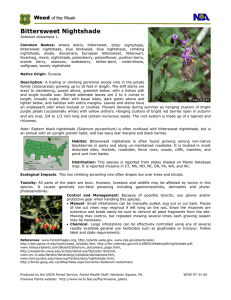The Quad-City Times, IA 10-15-06
advertisement
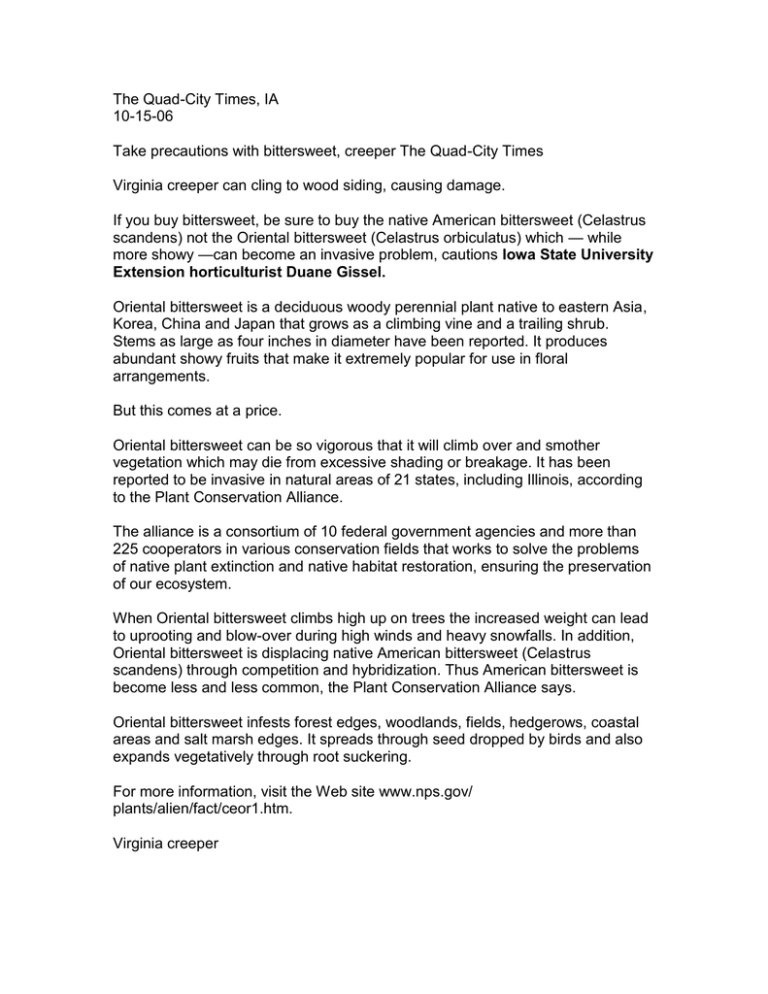
The Quad-City Times, IA 10-15-06 Take precautions with bittersweet, creeper The Quad-City Times Virginia creeper can cling to wood siding, causing damage. If you buy bittersweet, be sure to buy the native American bittersweet (Celastrus scandens) not the Oriental bittersweet (Celastrus orbiculatus) which — while more showy —can become an invasive problem, cautions Iowa State University Extension horticulturist Duane Gissel. Oriental bittersweet is a deciduous woody perennial plant native to eastern Asia, Korea, China and Japan that grows as a climbing vine and a trailing shrub. Stems as large as four inches in diameter have been reported. It produces abundant showy fruits that make it extremely popular for use in floral arrangements. But this comes at a price. Oriental bittersweet can be so vigorous that it will climb over and smother vegetation which may die from excessive shading or breakage. It has been reported to be invasive in natural areas of 21 states, including Illinois, according to the Plant Conservation Alliance. The alliance is a consortium of 10 federal government agencies and more than 225 cooperators in various conservation fields that works to solve the problems of native plant extinction and native habitat restoration, ensuring the preservation of our ecosystem. When Oriental bittersweet climbs high up on trees the increased weight can lead to uprooting and blow-over during high winds and heavy snowfalls. In addition, Oriental bittersweet is displacing native American bittersweet (Celastrus scandens) through competition and hybridization. Thus American bittersweet is become less and less common, the Plant Conservation Alliance says. Oriental bittersweet infests forest edges, woodlands, fields, hedgerows, coastal areas and salt marsh edges. It spreads through seed dropped by birds and also expands vegetatively through root suckering. For more information, visit the Web site www.nps.gov/ plants/alien/fact/ceor1.htm. Virginia creeper Virginia creeper, while native, can be quite vigorous and shade out or kill plants it is using for support. And its root-like holdfasts can cause damage to the sides of buildings especially wood siding. It is best to grow these types of vines on another structure a few inches in front of the siding to allow adequate air circulation and thus discouraging damage.
